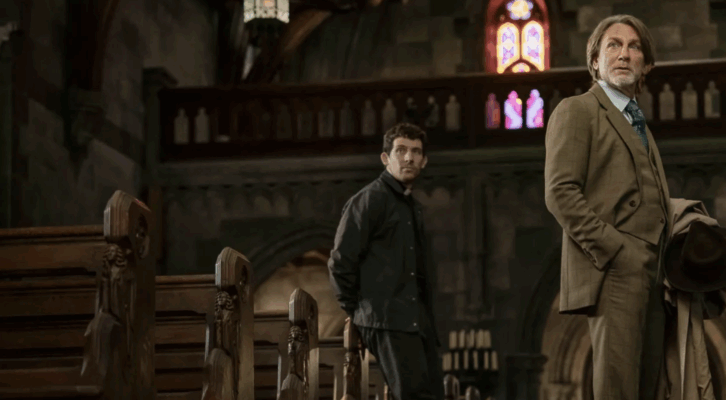Three books were written and two television documentaries produced on the Brian Kohberger case—in which four college students were murdered in their beds in Moscow Idaho in November 2022—before the case had come to trial. For months, daily TV news, podcasts, numerous You Tube Channels, and social media groups were clogged with commentary in which “experts” opined relentlessly on the who, what and why of the murders, with knowing almost nothing of the facts.
True crime in America was a cultural phenomenon well before the Kohberger case. Bonnie and Clyde, the Lindburgh baby kidnapping and the O.J. Simpson case are earlier sensational murder cases which captivated the public mind.
But the dramatic rise of true crime to where it is today—a cultural obsession—fueled by new media, began with the podcast Serial and the docuseries Making of a Murderer in 2015.
By 2024, close to fifty percent of people over eighteen consumed at least one true crime story a week on one of three platforms: Documentary, podcast, or book. (Even more surprising, seventy-five percent of the consumers are women). Investment in True Crime in all formats is estimated in 2024 to have been between six and eight billions dollars a year.
One third of Netflix documentaries are True Crime. The recent Dahmer documentary Monster currently ranks number three on Netflix’s most-watched list. Three channels show nothing but True Crime twenty-four hours a day. Dateline and 48 Hours anchor television networks in the genre.
There are 28,000 true crime podcasts with an estimated two million listeners a day. The well-known podcast True Crime Junkie holds the number one spot over Joe Rogan and puts on dramatic performances with music and videos in venues around the country.
The Kohberger case, which came to a head in August 2025, elevated true crime into the cultural mainstream. It is difficult to find a person who, after the plea hearing and sentencing hearings, at which members of the victim’s families made dramatic statements, isn’t familiar with some aspect of the case.
The intense coverage continues today as Kohberger settles into prison, with stories of non-stop harassment by other inmates. The media seems to be almost waiting, if not hoping for, the next chapter: his death at the hands of a fellow prisoner.
In moving into the mainstream, the Kohberger case created a new media model. Although two books were published in 2023 and 2024, and two documentaries on the case were produced in the same time period, the big punch was set for the weeks just before August 18, 2025, the date set for Kohberger’s trial.
On July 11, Netflix released a four-part series, One Night in Idaho: The College Murders. On August 14, Little, Brown released The Idaho Four: An American Tragedy, by James Patterson and Vicky Ward. James Patterson served as an executive producer on the Netflix documentary.
Publicity and promotion for both events began weeks before the trial date. Podcasts and You Tube channels worked the release dates into their presentations.
While the plea agreement blew the specifics of the plan, the media storm that preceded it and followed the hearings and the release of investigative documents was massive—book authors appearing on You Tube Channels, near-constant coverage by the major true crime networks and podcasts, local TV stations, social media sites like Instagram, networks and cable channels leading with the story. One can only imagine the media scene were the case to have gone to trial. Which other cases will.
Now a full-blown cultural phenomenon, true crime needs content. The monster needs to be fed.
The media saturation and integration of formats in Kohberger will be the new model for coverage of true crime cases. This will be particularly true when the crime is murder and has a sensational aspect, such as in Kohberger, Murdaugh, Menendez, Dahmer, etc.
All formats will be up and running well before the trial. Book and documentaries will be tied in, along with You Tube Shows and podcasts and social media sites and aimed for release before the trial. More books and documentaries will be released after the trial. (The Murdaugh case generated four books and five documentaries or specials after the trial. None before.)
Like Dahmer and Menendez, the media events will be newsworthy in and of themselves. The various formats will collaborate like they did in Kohberger; the case will be covered before and after the trial (or whatever event brings the case to a close) by You Tube, books, documentaries, podcasts and social media groups (who were quite active in Kohberger, to the detriment of several innocent people).
It is my hypothesis that under this model the true crime beast will stay on top of sensational cases, like Kohberger and Petito and Murdaugh, with instant books and documentaries and You Tube shows. Newscasts will lead with recent developments and offer ongoing specials. Instagram will push out disturbing crime photos. Social media groups will form almost instantly and descend on the scene and participants.
The trial of Luigi Mangione, charged with the murder of United Health Care CEO Brian Thompson, is next up to feed the true crime obsession. Without a trial date having been set, a Simon & Schuster book on the case entitled Luigi: The Making and Meaning will be released on November 4, 2025, and James Patterson and Vicki Ward of Kohberger fame, have contracted with Little Brown for a book, as of now without a title or release date. Three docudramas/series have been shown and several more are in the works.
One can only imagine the plethora of books and shows and podcasts and commentaries on YouTube that will flourish as the trial draws near, much less when it is actually completed.
***

















